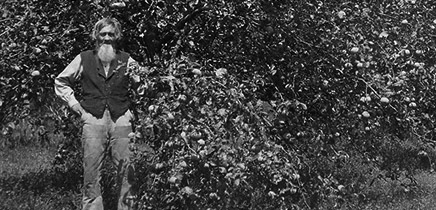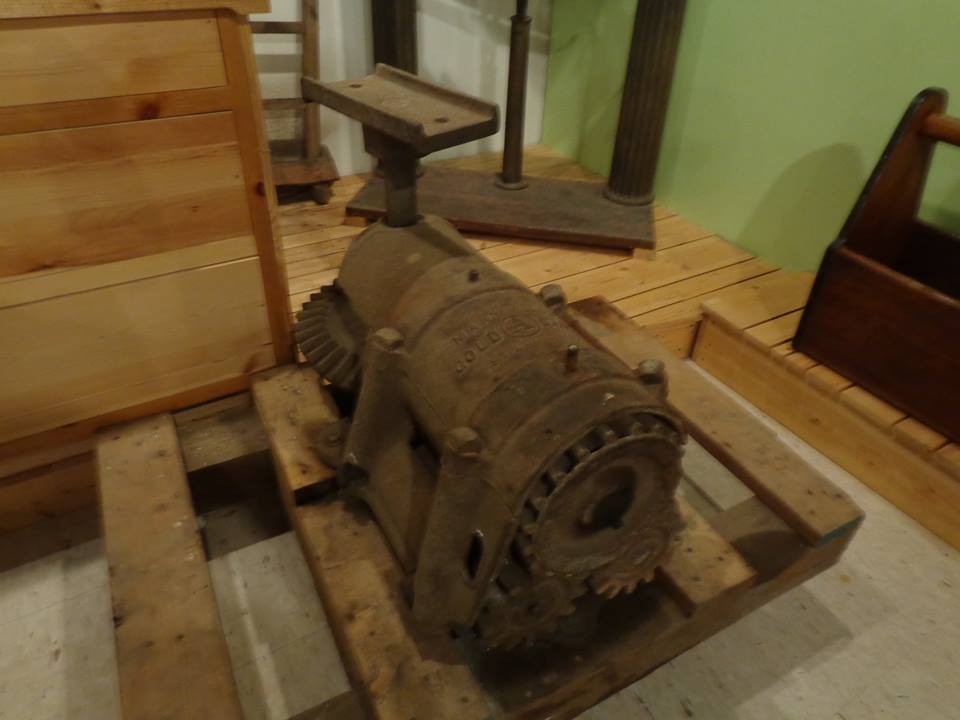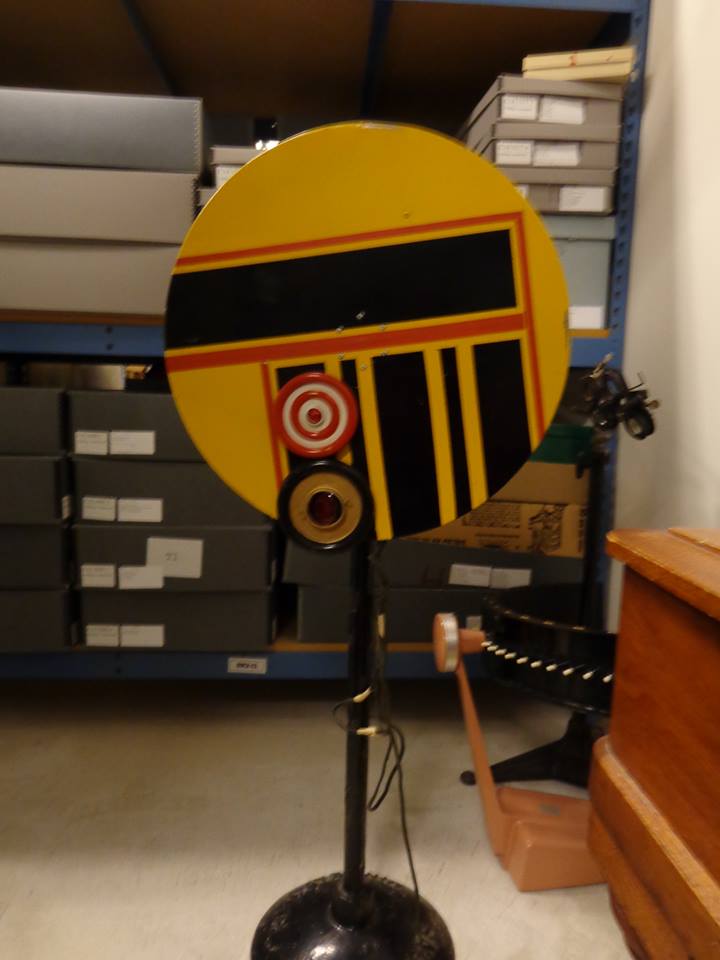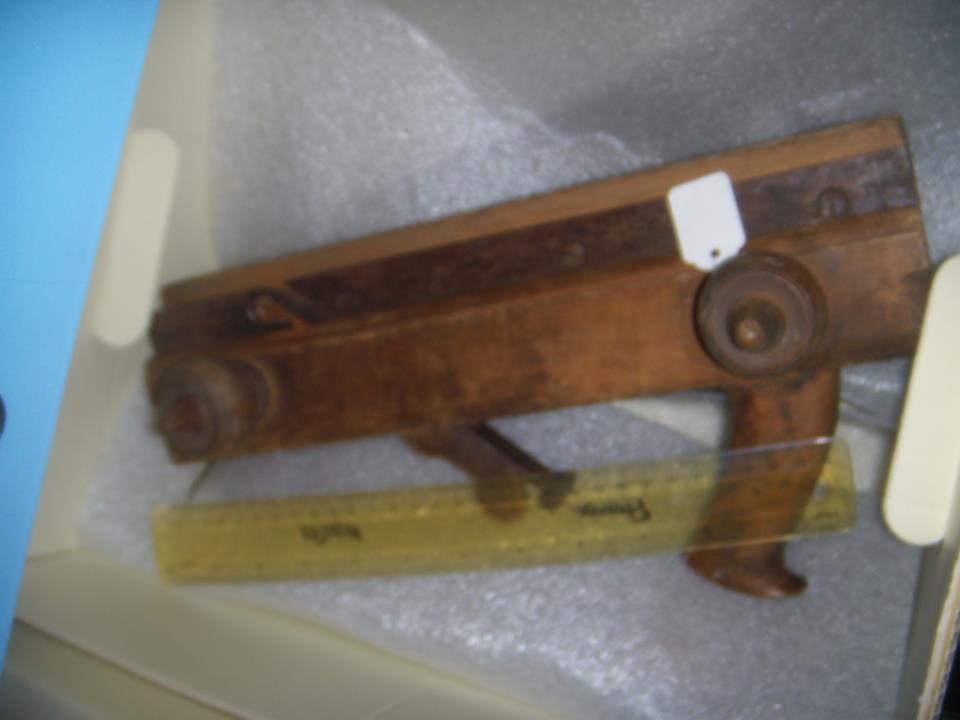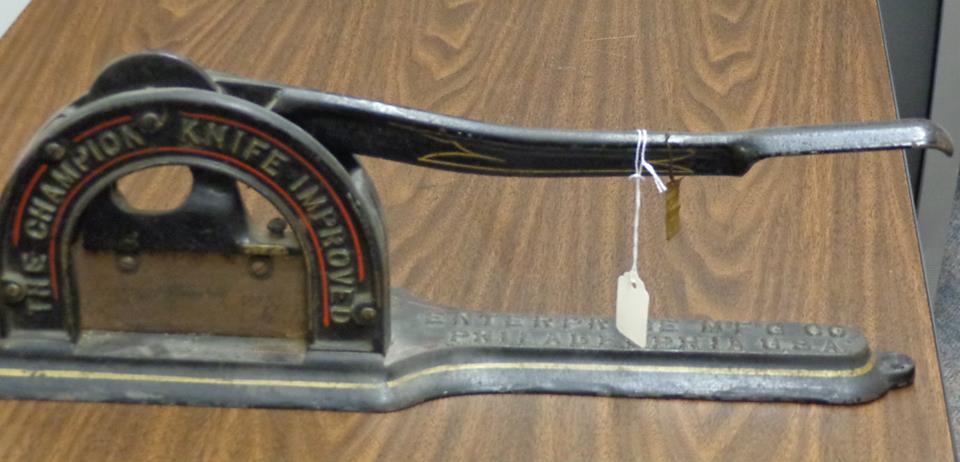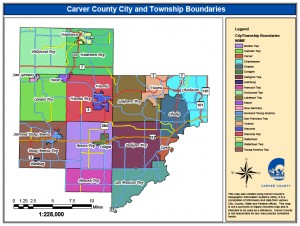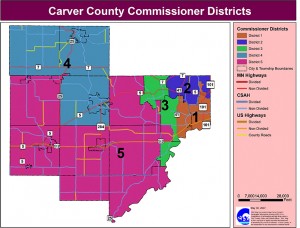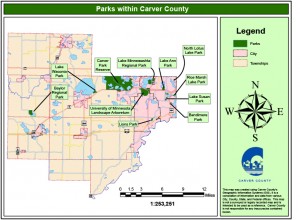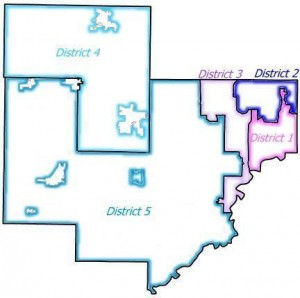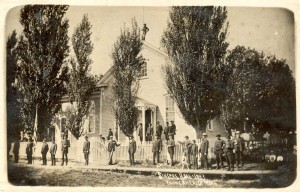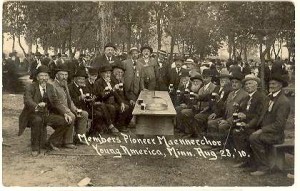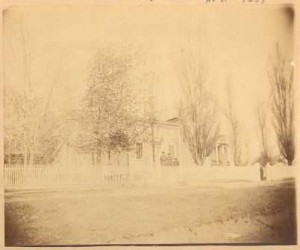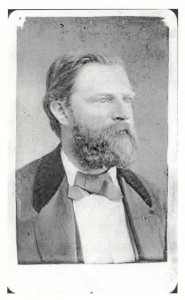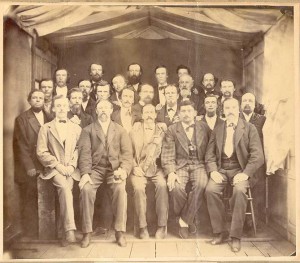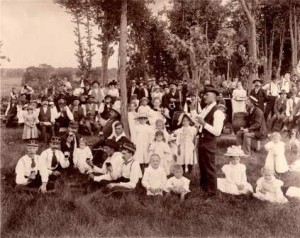The Chaska brick industry flourished from 1857-1950. First called “Chaska Brick” in an 1894 Chaska Herald article, this distinctive brick is known for its unique “creamy” color, high clay content, and quality. Chaska brick remains closely tied to the history of the city it came from.
Three key factors led to the success and popularity of Chaska brick. First, the brick is made from clay found in deep, rich alluvial clay deposits, with a distinctive layer of yellow clay over blue. Both clays are rich in sand and finely ground silica, giving the bricks a slight sparkle. Early use of wood to fire the brick versus later gas oven firing also caused a sparkle. Early brick makers in the 1800s thought the deposit to be limitless, but it turned out to be about twenty to forty-five feet deep.
The existence of nearby rich wood sources to heat the brick making kilns was another reason for the Chaska brick industry’s success. Chaska and Carver County are located in what was once the Big Woods of western Wisconsin and south-central Minnesota. This large forest of oak, maple, basswood, elm, ash and white birch provided tons of wood to heat the kilns. Many farmers clearing land traded firewood for brick and off-season brick workers cut firewood for their employers.
Third, Chaska was settled by German and Scandinavian immigrants, who came from areas where brick was the favored building material. These immigrants were skilled brick masons, and provided experienced labor for the brickyards. Success for Chaska brick was also aided by the brick weighing less than other brick, making it cheaper to transport. Brick making and firing techniques improved over time as well.
By the 1860s, four main brickyards existed in Chaska, employing about 100 people, in a town of only 1,255 people. By the 1880s, the number of employees had risen to nearly 400. By 1900, daily production reached an incredible three and a half million bricks, which is about forty to sixty million bricks a year. Six brickyards employed around 600 men, twenty percent of the city population, making Chaska brick the leading source of jobs and money for Chaska. By the beginning of the twentieth century, thirty percent of all brick used in Minnesota was made in Chaska.
Chaska brick was used when constructing many important buildings in Minnesota. For example, in Minneapolis, it can be seen in the Orpheum Theatre, Renaissance Square, Market Square, Wesbrook Hall on the University of Minnesota Twin Cities campus, the Minneapolis Chamber of Commerce, and the Minneapolis Auditorium. In St. Paul, the prison at Fort Snelling and the State Capitol, where over two million bricks built the basement, are made with Chaska brick. It was used to line the sewers of Minneapolis and St. Paul. Chaska brick was used in many types of buildings: schools, city buildings, factories, mills, hotels, barns, farmhouses, row houses, houses, outhouses, stables, saloons restaurants, banks, churches and more.
Over the course of the early to mid twentieth century, the Chaska brick industry stalled. New building materials like clay tiles and concrete blocks were preferred. The new types of materials, and the financial crisis of the Great Depression, led to its decline. There was not enough demand for the supply. In the late 1960s, building fashion changed, and olive green or harvest gold bricks were preferred. Overtime, brickyard owner Charles Klein bought out the other brickyards, or they shut down from lack of sales. Trouble between labor and management in the 1960s lowered Chaska brick’s market price, interrupting the supply produced. Klein’s brickyard, the last to produce Chaska brick, finally shut its doors in 1971.
After production of Chaska brick ended, its historic significance was recognized. Many buildings made of Chaska brick were placed on the National Register of Historic Places. Examples of these buildings in Carver County include the Frederick E. DuToit house, the Wendelin Grimm farmstead, the Herald block, the Simons Building and Livery Barn, and the Paul Mohrbacher house. In the twenty-first century, efforts to protect Chaska brick buildings continue through historic preservation.
Turning Point: The last brickyard in Chaska shut its doors in 1971, and in the years following, the significance of this brick industry gained recognition with many Chaska brick locations protected on the National Register of Historic Places.
Chronology:
- 1857: First bricks of distinctive local clay, later named Chaska brick, are made and used.
- 1860s: There are four operating brickyards, employing up to 100 of Chaska’s 1,255 people.
- 1880s: Chaska brickyard employment reaches nearly 400 men.
- 1894: The locally-made bricks are first called “Chaska brick” in a Chaska Herald article.
- 1900: Daily production reaches an incredible three and a half million bricks, which is about forty to sixty million bricks a year.
- 1900: Six brickyards employed around 600 men, twenty percent of the city population. By this time, thirty-percent of all brick used in Minnesota was made in Chaska.
- 1960s: Cream colored brick loses popularity to other brick colors and building materials.
- 1971: Final Chaska brick factory closes its doors.
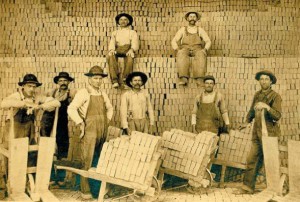
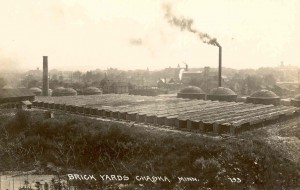
Bibliography:
Barac, Lavonne. Chaska:A Minnesota River City. 2 vols. St. Paul, MN: Carver County Public Library, 1989.
Chaska Historical Society. “Chaska Brick: 1857-1950”. Pamphlet. Information gathered from: City of Chaska- Historic Context Study, Prepared for the Chaska Heritage Preservation Commission by Thomas R. Zahn and Associates. Bethany Gladhill, Project Associate, Spring 2006.
“Carver County, Minnesota”. National Register of Historic Places. Accessed February 23, 2013. www.nationalregisterofhistoricplaces.com/MN/state.html
Petersen-Biorn, Wendy. ”Farmhouses in Carver County: Resources Worthy of Preservation”. Brochure, Minnesota Department of Transportation, April 2011.
“National Register of Historic Places: Carver County, Minnesota”. Minnesota State Historic Preservation Office (SHPO), Minnesota Historical Society. Accessed February 23, 2013. http://nrhp.mnhs.org/NRSearch.cfm
Smith, Patrick. “Chaska Brick”. Student paper for Architecture 5512, March 1999. Minnesota Historical Society call # F612.C29 C476 1999.
Related Resources:
[Primary]
“Architectural inventory of Chaska Brick farmhouses in Carver County, Minnesota”. St. Paul: Minnesota State Historic Preservation Office, 2004.
Henning, Barbara J. Chaska Brick Farmhouses in Carver County, Minnesota. Phase III Mitigation Report. 2005. Copies on file with the Minnesota Department of Transportation and Minnesota SHPO, Minnesota Historical Society.
[Secondary]
Carver County: Today and Yesterday. Compiled by the Carver County Statehood Centennial Committee, 1958.
Holcombe, Maj. R.I., editor. Compendium of History and Biography of Carver and Hennepin Counties, Minnesota. Chicago: Henry Taylor and Company, 1915.
Lofstrom, Ted and Lynne VanBrocklin Spaeth. Carver County: A Guide to Its Historic and Prehistoric Places. St. Paul: Minnesota Historical Society Press, 1978.
Martens, Steve C. “Historic Chaska, Minnesota: “Minnesota’s Brick City”: Downtown Preservation Design
Manual. Prepared for the: Chaska Heritage Preservation Commission, 2003.
Martens, Steven C. “Ethnic Traditions and Innovations as Influences on a Rural Midwestern Building
Vernacular”. Master’s thesis, University of Minnesota, 1988.
Martens, Steve. “Brick Houses in Carver County”. Student paper, University of Minnesota-Foster Dunwiddie Papers, 1987-1988.
Tremblay, Ruth and Lois Schulstad. Images of America: Carver County. Charleston, South Carolina: Arcadia Publishing, 2011.
[Web]
“National Register of Historic Places-Carver County”. National Park Service. Accessed February 26, 2013. http://nrhp.focus.nps.gov/natreghome.do?searchtype=natreghome
Images/Audio/Video
AV-99-11025
Photograph Collection, Carver County Historical Society, Waconia
Postcard “Brickyards, Chaska”
Cook-Montgomery Co. Post Cards, Minneapolis
Description: brickyard factory in Chaska, MN circa 1913.
Rights held by the CCHS.
VII A 5
Photograph Collection, Chaska Historical Society, Chaska, MN Photographic print “Klein Brickyard workers circa 1910” Description: Top Row- Albert Buschkowsky, August Buschkowsky (Boldt?) Bottom- Wm. “Bill” Griep, Herman Tiedeman, Rudolph Schoen, _______ Neubert, unknown, unknown Rights held by Chaska Historical Society.
“This article used with the permission of MNopedia, operated by the Minnesota Historical Society, under a Creative Commons License. No changes have been made to the article’s content.”

